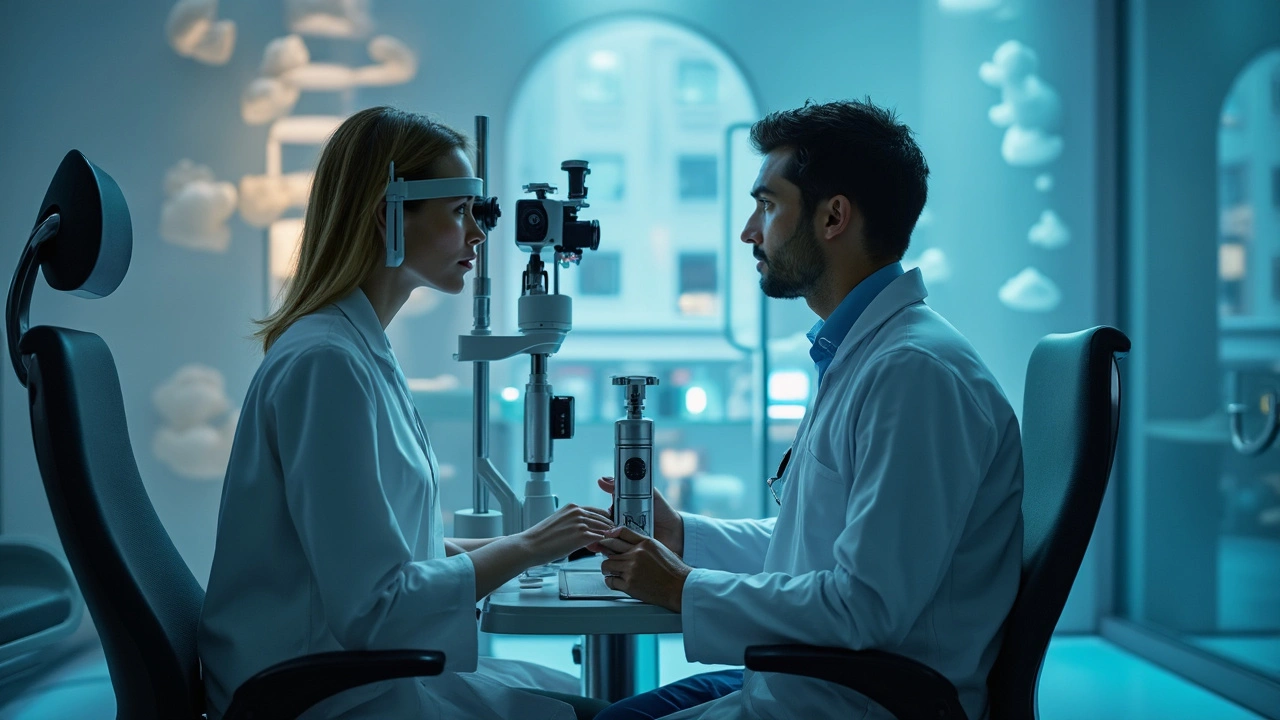Visual Field Testing: Quick Guide for Everyday People
If you’ve ever heard your eye doctor mention a "visual field test" and felt lost, you’re not alone. It’s simply a way to check what you can see around the edges of your vision – the parts most people don’t notice until something goes wrong.
Why Your Doctor Orders Visual Field Tests
Doctors use visual field testing to spot problems like glaucoma, optic nerve damage, or brain injuries early. Those conditions often start by stealing peripheral (side) vision before you even realize it. Catching them early means treatment can keep your sight safe.
The test also helps monitor diseases that already affect your eyes. If you have diabetes or a history of eye surgery, regular visual field checks show whether things are staying steady or getting worse.
How the Test Works
A typical test takes place in a dark room. You’ll sit facing a screen and press a button every time a tiny light flashes somewhere you can see it. The machine records which spots you notice and which you miss.
The software then creates a map of your field of vision. Dark patches on the map mean areas where you didn’t see the lights – those are potential problem zones. Your doctor compares this map to normal patterns to decide what’s happening.
There are two main types: static and kinetic. Static tests show lights at fixed spots, while kinetic ones move a light across your vision. Both give useful info; some clinics use one, others both.
The whole thing usually lasts 5‑15 minutes per eye. It feels odd at first because you have to keep looking straight ahead without moving your head, but most people get the hang of it quickly.
Don’t worry about pain – there’s no contact with your eyes and no bright lights that could hurt you. If you wear glasses or contacts, you’ll be asked to keep them on unless they interfere with the test.
After the test, the results are printed out in a simple chart. Your doctor will walk through it with you, pointing out any blind spots and what they mean for your health.
Preparing is easy: avoid caffeine or nicotine right before the test, as they can affect how well you focus. If you’re taking eye drops, follow your doctor’s instructions – sometimes they want you to wait a few minutes after using them.
If you have any vision problems like cataracts that blur your view, tell the technician. They may adjust the settings so the test still gives reliable data.
Remember, visual field testing is just one piece of the puzzle. It works alongside regular eye exams, pressure checks, and imaging to give a full picture of eye health.
So next time your doctor suggests a visual field test, think of it as a quick check‑up for the side windows of your vision. A few minutes now can save you from bigger issues later.

Understanding Open-Angle Glaucoma and Visual Field Testing
Open-Angle Glaucoma is a sneaky eye condition that can affect your vision without warning. Visual field testing plays a crucial role in detecting its presence and progression. By understanding the testing process, those at risk can take proactive steps in managing their eye health effectively. This article provides a practical guide to these tests and tips for preserving your sight.